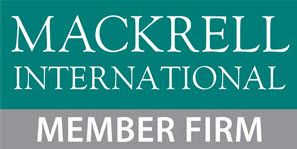By Ann K. Chapman and Christopher N. Coyle
Foreclosure is a process by which the lender terminates your ownership of your real property. The lender will do this through a public foreclosure sale that will take place at a published place and time (usually at the local courthouse). Once the foreclosure sale has taken place, you no longer own the real property and you will have to vacate the property within 10 days.
If your lender is threatening foreclosure, that means that you are in significant default on your mortgage payments and you are in danger of losing your house. There are two different methods of foreclosure: judicial and non-judicial. In a judicial foreclosure, the foreclosure process occurs in a lawsuit filed by the lender in state court or, in some cases, federal court.
Once a judicial foreclosure has been commenced by the filing of the complaint, the lender will serve the borrower with a summons and a copy of the complaint. If you have been served with a summons in connection with a judicial foreclosure, you need to see an attorney as soon as possible, as there is a limited time to appear to defend. The process of non-judicial foreclosure is discussed in the next question.
How is a non-judicial foreclosure started?
Many lenders use trust deeds, rather than mortgages, because a trust deed can be foreclosed non-judicially or without the involvement of a court. A non-judicial foreclosure of a trust deed is much cheaper and easier than a foreclosure lawsuit, and an advantage to the lender in a non-judicial foreclosure is that there is no right of redemption.
Once the non-judicial sale is held, the buyer has no right to get it back. A non-judicial foreclosure is initiated when the lender records a Notice of Default and Election to Sell in the real property records in the county where the real property is located. The Notice will be served upon the borrower and the occupants of the real property by certified mail and US first class mail. The Notice will state the specifics of the loan default and the total amount owing. More importantly, the Notice will list the date, time, and location of the foreclosure sale.
Once the lender formally starts the foreclosure process by filing a notice of default, you typically will have no more than 120 days to resolve the problem or you will lose your house. Filing a bankruptcy can stop foreclosure. There are steps you must take to become eligible to file bankruptcy, such as take a consumer credit counseling session from an approved credit counseling agency.
To be on the safe side you should meet with a bankruptcy attorney at Sussman Shank LLP as far in advance of the foreclosure as possible. Even if there is not much time prior to the foreclosure, there may still be things that can be done to prevent the foreclosure from occurring. You should never hesitate to call an attorney at Sussman Shank LLP to see if it is not too late to stop the foreclosure.



